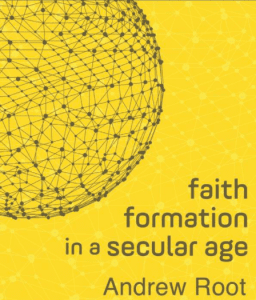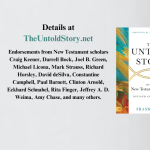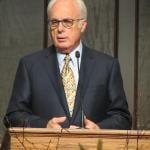By David Fitch, Professor at Northern Seminary
One approaches the concluding chapter of The Cross and the Lynching Tree by James Cone, the architect of the Black theology Movement, with great anticipation. We come with deep longings to see change. We come asking, “what shall we do in the face of the horrific racism that rules our society? What is the good news in all of this?”
The gospel for James Cone is:
…more than a transcendent reality, more than “going to heaven when I die.” (It is) an immanent reality—a powerful liberating presence among the poor right now in their midst.
The Christian gospel is “God’s message of liberation in an unredeemed and tortured world.”
Cone does not dismiss the transcendent reality of the gospel “that lifts our spirits to a world far removed from the suffering of this one” (155). Indeed, Malcolm X and MLK Jr. both had revelatory moments of the transcendent that sustained them in the midst of crisis (this gives us a good clue as to how Cone views the transcendent). But Cone is adamant that the gospel is more than this.
The gospel is that God is actually at work in the suffering of His people.
The Gospel for James Cone
Central to Cone’s gospel is that God has turned the cross, a symbol of death and defeat, into “a sign of liberation and new life” (156).
In Niebuhr’s words, the cross of Christ worked a “transvaluation of values.” In other words, God reveals evil for what it is in the cross, and exalts the suffering of people. Cone says: Let us likewise see the lynching tree as a “transvaluation of values” (157).
Cone asks us to resist “spiritualizing” the cross via a substitutionary atonement that creates a withdrawn piety, making the cross irrelevant to injustice in the world. This is the white man’s atonement.
Cone argues that “Jesus was crucified by the same principalities and powers that lynched black people in America.” And because “God was present with Jesus on the cross and thereby refused to let Satan and death have the last word…God was also present in every lynching…God transformed lynched black bodies into the re-crucified body of Christ” (158).
There is an “opening to the transcendent” here in the crosses of the suffering. Here we see God is at work redemptively through the suffering (Cone plays homage to MLK’s theology of redemptive suffering, 83-92).
The gospel for James Cone is that God is at work in the suffering of the lynching tree, working to overcome the injustice. In my preferred language, Cone is recognizing God’s presence at work in the suffering that is profoundly evident in the cross of Christ at Calvary. (This counters the atonement theology that sees God the Father as separated from/turning his back on the Son at the cross. Following Greg Boyd et. al. I believe God withdrew his presence from holding back the evil, thereby allowing Jesus to take on the consequences of the world’s sin/violence).
Notice again he says “God was present with Jesus on the cross,” refusing to let Satan and death have the last word. In the same way “God was also present in every lynching.” He talks of the “concrete signs of divine presence in the lives of the poor.” I believe when he talks about the “the liberating power of black experience” (154), he is talking about the power of presence, the relational power of God’s presence at work in the world drawing people to reconciliation and renewal. Cone lacks of an account of atonement here. This is problematic because it leaves missing an account of how God works—not through violence—but by overcoming the violence.
Nonetheless, this all still resonates powerfully for me and with my own work on Faithful Presence.
But Now What?
But what does this mean in practice? How are we Christians (especially white Christians) to respond to this?
Cone points us in two directions.
1) Let us remember. By “remember,” I mean “be present.” Let us be present to the suffering of the lynching tree. Cone suggests that just as the Germans should never forget the Holocaust, Americans should never forget slavery, segregation, and the lynching tree. By remembering, Cone says, we are recognizing “blacks and whites are bound together in Christ by their brutal and beautiful encounter in this land…What happened to blacks happened to whites. When whites lynched blacks, they were literally and symbolically lynching themselves” (165). Cone believes if America has the courage to face “the great sin” of lynching and the legacy of white supremacy, this can lead to change and transformation.
2) Let us act. For Cone, the lynching tree frees the cross from the false pieties of well meaning Christians. We are called to do more than mere contemplation and adoration. In the words of Cone, “we are faced with the challenge to take the crucified down from the cross” (161). The cross offers us courage that there is more than just contemplation. God is present in the cross. And so we encounter God’s solidarity with the suffering in the cross and discover the beauty therein (162). Cone is not explicit as to what this action will look like, but his assumption is this encounter with the cross and the lynching tree will change the way we live. Cone is confident:
If America has the courage to confront the great sin and ongoing legacy of white supremacy with repentance and reparation there is hope “beyond tragedy.” (Cone’s concluding words on p. 166).
The Temptation of Niebuhr?
And so Cone leaves us with a call to remember and a call to action. Let us be present and let us engage.
But how to engage? After the compelling, so important, and so biblical call to be with the suffering, know the suffering, see the injustice, and that God is on the side of the suffering—what Gutierrez called the “Preferential Option of the Poor”—we are called to go do something about it.
But how? Do we engage in activism? Do we engage in trying to change the legal and or economic system through systemic change? Do we engage in coercive engagement, all out “war” against the evils we plainly see? Do we seek to impose our systems, implement retributive actions to remedy, and make “even” the injustices done against the victims?
After reading Cone, the temptation is to follow the realism of Niebuhr and take the justice of the world into our own hands.
More blatantly, the temptation is to change the world through various coercive means. This, to me, is the temptation of Cone—indeed the temptation of liberation theology.
Like Latin American liberation theology, where we are tempted to rely on Marxian social analysis and enter into working for social change through the machinery of antagonism and provoking dialectical revolution, with Cone we are tempted to revert to Niebuhrian realism, to engage in the battles of pitting one side of coercive power over another after the injustice has been revealed.
Cone’s critique of Niebuhr (in Lynching Tree) seems at once to condemn the inadequacy of his approach to “proximate justice” while at the same time giving a nod to the realism of his assessment: that indeed we must engage the world on the world’s terms, engage its violence with a pushback against it, if indeed we are to accomplish anything.
It is easy to remember how at the end of Dr. Martin Luther King Jr.’s ministry, he himself lost patience with the practice of nonviolence. It’s easy to remember Stokely Carmichael, Malcolm X, and others who viewed non-violence as a losing strategy. We must meet power with power. We must share in the same power that does these wrongs to us. Violence with violence.
But what else is there? Where else is there to go after being faced with the compelling reality of suffering and injustice as unveiled in The Lynching Tree (and, for that matter, in all theologies of liberation?)
The Missing Pieces of a Theology of Liberation
Here’s where I propose an Anabaptist alternative to the Niebuhrian option—where we take the best of Cone, and supplement him with Anabaptist practice to build a contextual theology.
The sixth (and final) chapter of Cone’s Lynching Tree leads most readers to default to the Niebuhr option. Even though Cone criticizes Niebuhr for the lack of presence proffered by his theology (that I contend is inherent to Niebuhr’s theology), Cone leaves us with no alternative to Niebuhr.
To offer such an alternative, I suggest Cone’s book needs three things:
1) An Alternative Account of Power: There is lacking in Cone’s book an alternative account of power. As I have argued elsewhere, God in Christ enters the world through his people with an alternative way of power. In the words of Jesus:
You know that among the Gentiles those whom they recognize as their rulers lord it over them, and their great ones are tyrants over them. But it is not so among you; but whoever wishes to become great among you must be your servant (Mark 10:42-43).
God comes, he convicts, he centers, and realigns all forms of relationship—including interpersonal and systemic ones—through His presence. By “presence,” I do not mean here a psychologized or spiritualized dynamic at play when people become present to each other, although that may be a part of it. I mean that God’s presence that moves people and systems towards redemption, reconciliation, forgiveness, healing, cooperation, and transformation, that is, in essence, supernatural.
This presence of God is more than personal. It is always social. It works for social transformation. And when Christians become present in a space, engage, listen, and speak truth in love, entering the space of violence, injustice, suffering, and opening space for discerning new ways forward, God works. This is presence.
His presence is the opposite of violence and coercion. God’s presence of course can be rejected because God does not coerce. So to the human, God’s presence is inefficient.
But when God’s presence is received and responded to, true transformation breaks out.
This is a different kind of power. But it is power nonetheless, and it is mightily at work. In the words of the great John Perkins:
Racism is satanic. It will therefore take a supernatural force to defeat it.
There is judgement against injustice in this power, for in the very rejection of God’s presence, God hands people over to the consequences of their sin for all to see (remember Selma). And change comes again— either in repentance or the destruction of evil as its own end.
Niebuhr could never fathom that anything political (or social) could be accomplished via God’s presence. For him, spirituality was always individual. Like Martin Luther (he was Lutheran enough in this regard), Niebuhr kept the right hand of Spirit separate from the left hand of the Sword. The political needed the right hand, the left hand could only be individual.
But the Anabaptist in me shouts out: Only so much can be accomplished via the left hand of coercion Yes we need preservatory protections. But it is through the Spirit, God’s presence, that He shall work in the world for healing, reconciliation, and restoration. And this is much more than individual. This is intensely social, political. Though Cone gives overture again and again to presence at work in the suffering of his people, he does not develop how a people—the church—makes space for His presence…what I have called “Faithful Presence.”
Without faithful presence, the church will always be tempted by Niebuhr. We always default to the Niebuhrian temptation.
2) A Role for The Church: To engage the world’s injustice this way, Cone’s book needs a prominent role for the church. But this goes missing in Cone’s Lynching Tree. Indeed the most prominent treatment of the church in The LynchingTree is of the white church’s failure in America during the pre- and post-WWII Civil Rights movement. As such, it’s easy to understand why Cone has little imagination for the church to play a role in challenging and transforming the culture of white supremacy so ensconced in the American culture.
And yet, with no account for the church, what we get is a default church. The church in effect becomes a training organization for volunteers to be sent into the world to do the work of justice.
The problem with this option is it always sends Christians into the world with the posture “we know what is right” and we are here to do battle against this injustice on the world’s terms of violence and antagonism.
It is inevitable, then, that God’s people get absorbed into the world’s violence. And I contend that all we end up accomplishing is some mediating steps towards holding back injustice (which is worthy nonetheless) but never get to opening space for the renewal of all things in Christ. We settle for less. And often, because we engage the world’s violence with more violence, we make it worse. I call it the Donald Trump effect. And in the end, we are exhausted, depleted justice warriors.
This is not the way God shall change the world.
Instead, it is the church’s task in the world is to be His Faithful Presence. It is by His work in the world, and by participating in it, that God shall bring His justice into the world. The church’s task is to be present to the racism of our culture, speak into it when the space is opened, and make space for the new world coming through reconciliation and table fellowship.
3) Jesus as Risen King: All of the above assumes that God has come in the Son. He has died, taken on the sin and violence of the world, and won a victory in the resurrection. He ascended and now sits at the right hand, the risen King, the ruling Lord.
Of course, Cone is focused on the cross. But much like evangelicals, Cone’s book offers no account of the resurrection and its role in overcoming racism (for too many evangelicals, the resurrection is merely the vindication of Christ in overcoming death).
But apart from the resurrection and ascension, there is no power of God’s presence at work in the world. Neither is there a church that lives under a different politic. And so power will be flattened (à la Niebuhr), and the church will be merely a volunteer training organization for the world’s violence. Jesus becomes merely our example, the exemplar who shows us how it is done. For sure, that is true. But in Christ, God has initiated a new Kingdom, a regime of presence, love, forgiveness, reconciliation, healing, renewal, and transformation. None of what I have said above is possible unless God has conquered evil in the world, triumphed over principalities and systems, defeated the chains of sin and antagonism, through the death, resurrection, and exaltation of Christ as Risen Lord.
Will This Work?
Will this work?
It depends upon what you mean by “work.”
But let me remind you of the stories of the early Civil Rights movement in the southern United States. It was Charles Sherrod and those early Student Non-Violent Coordinating Committee (SNCC) meetings that had multi-racial prayer meetings and sit-ins of presence on southern campuses and town centers that disrupted the ensconced Jim Crow society of the south.
Sherrod said that it was the “reconciliation that occurs within the Christian community (that) is the deepest and most permanent of reconciliations.”
As I make the case in Faithful Presence, reconciliation is a deep practice of God’s victorious presence in the world. It was Diane Nash of SNCC who said:
Our goal was to reconcile, to create a community recovered or fulfilled, rather than simply gain power over the opposition.
Here we see communities of presence at the core of what started the disruption of Jim Crow of the 50’s and 60’s.
It was Clarence Jordan and the Koinonia Farm communities of Georgia that gathered people, black and white, cooperating together to share economics and farming, that disrupted the white supremacist Jim Crow culture of Georgia.
It was John Perkins’ practices of the three “R’s”—Relocation, Reconciliation, Redistribution—grounded in the church, which added up to a social agenda more radical than any other advanced by the Civil Rights Movement.
These grassroots efforts—spreading across the south, grounded in the churches practicing presence— became the ferment from which the Civil Rights Movement grew, and which later the Rev. Martin Luther King Jr. became its public leader (read Charles Marsh’s Beloved Community for this history).
Ironically, one wonders: After the death of Martin Luther King Jr., after the accomplishments of several landmark pieces of legislation, whether the Civil Rights Movement was not in fact given over to the government (and para-church organizations) too soon, and in so doing, lost its ferment to go further into revealing racial injustice and healing the divisions and antagonisms. Surely legislation must come, but we need not lose the church’s witness to keep the work of justice flowing against ‘the powers.’
In the words of John Perkins:
The civil rights movement was an overwhelming success. But it failed to inspire our nation to move beyond integration to reconciliation (as quoted in More Than Equals, Spencer Perkins and Rice 1993, 17).
So instead, decades later, what we are left with is a society regressed to a second, more hideous, New Jim Crow as well as other variations of white oppression (read these writers.)
Conclusion
In conclusion, Cone’s work The Cross and the Lynching Tree is a brilliant book that pushes the church towards a theology and practice that is intensely contextual. It gives us a superior example of how we must first go be among our context, listen, observe, know the narratives, chart the pain, suffering, economics, to then begin to understand how Gods is at work here for redemption.
But we need more.
We need an ecclesiology (an understanding of the church’s role in the world). We need a way of practicing church as faithful presence to take the next step beyond awareness of injustice to actually allowing God to work for His healing, and for us to be his instruments.
For those interested in more study and development of Contextual Theology, check out our Doctoral program at Northern Seminary.
It’s always a danger for a white man to critique the ground breaking work of a black theologian of the stature of James Cone. So I humbly submit: Where have I seen things well? And what did I completely miss on? Does this review advance the work of liberation theology (my hope in writing it)? Let’s have a conversation.
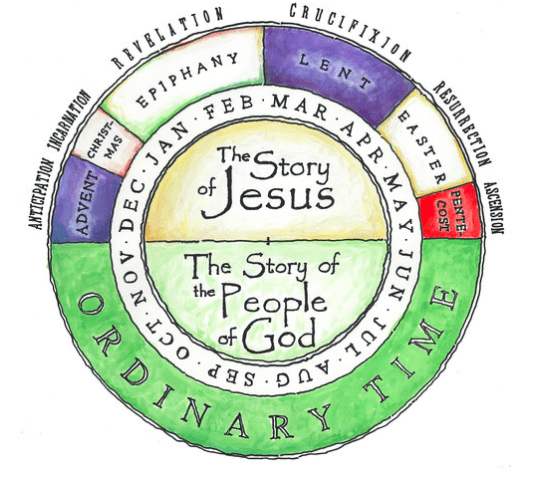 I begin a series that will seek to shed some light on why I am Anglican.
I begin a series that will seek to shed some light on why I am Anglican.
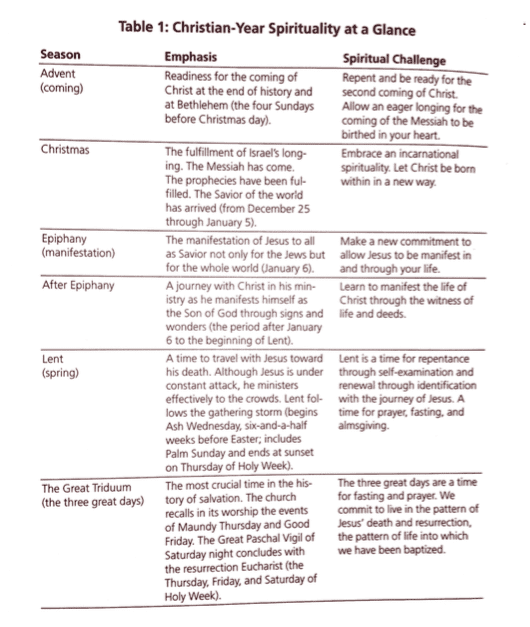
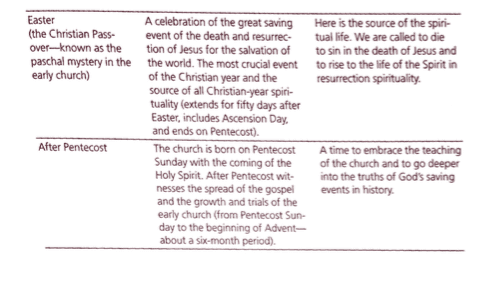
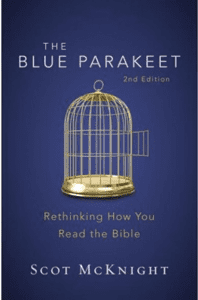






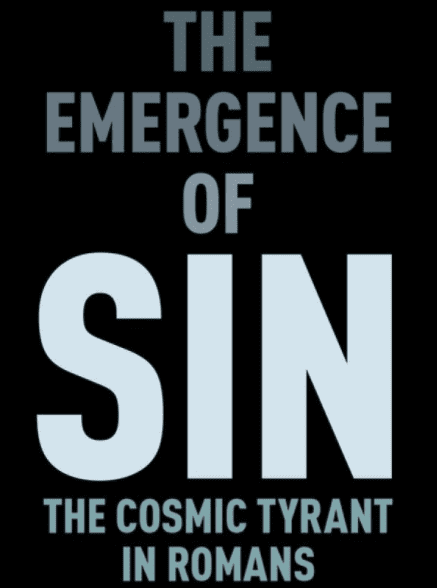


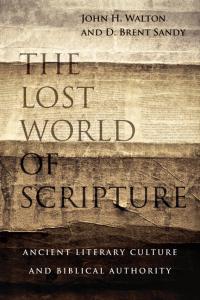 The next chapter of
The next chapter of 